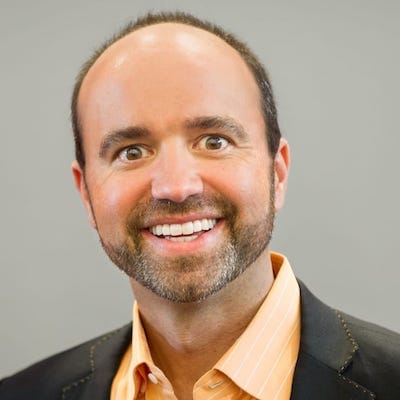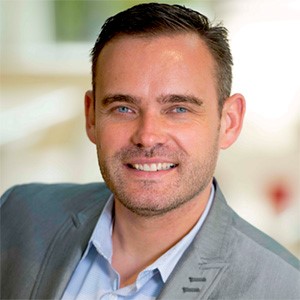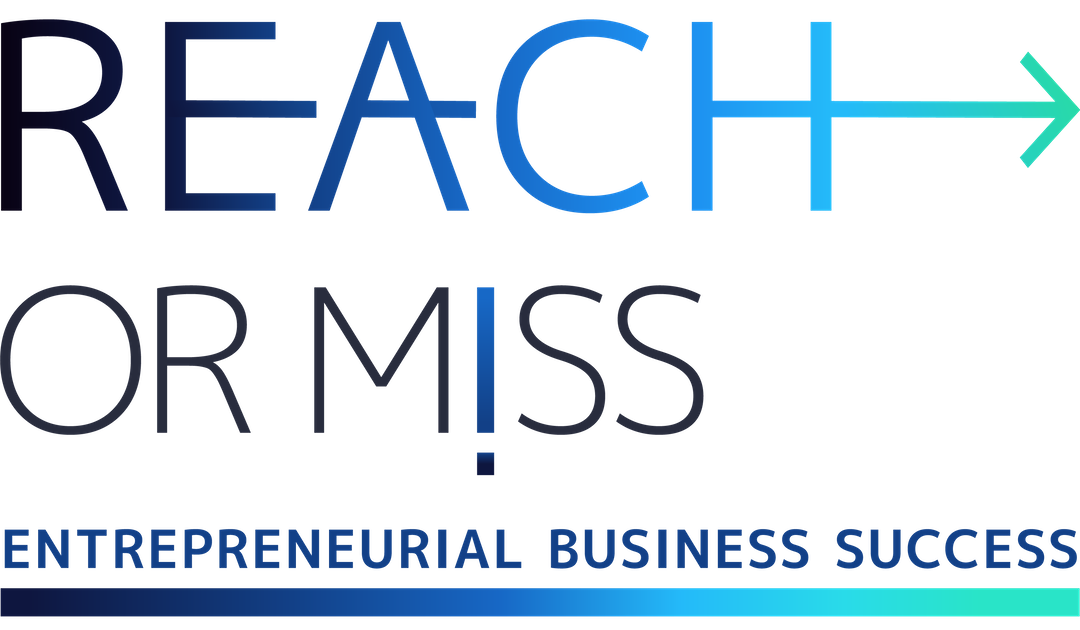Ep. 076 – The marketing campaigns successful entrepreneurs used to breakthrough into the market

Entrepreneurial marketing and sales are incredibly challenging.
How do you find the biggest market opportunity and need for an unfamiliar product in a market that probably doesn’t exist yet?
Successful entrepreneurs and opinion leaders Joe Pulizzi, David Beebe, Vladimer Botsvadze, and Tomas Laurinavicius tell us about their experiences and beliefs about reaching the business breakthrough.
Since we’re talking about the marketing and sales of an entrepreneurial business, now is a perfect time to debunk one of the greatest myths in the startup world. In a recent conversation with the marketing manager of a startup that develops and sells enterprise software, I was informed of one of the most common, yet false, axioms regarding marketing:
“You need to spend big on marketing if you want to bring in the big bucks.”
Wrong!
The truth is marketing is all about looking at the problem your product or service solves from the point of view of your potential customers and helping them solve that problem or struggle.
The tremendous change in marketing and sales channels on one hand and customers’ behavior on the other, from offline to online and social media, and from one to many to one-on-one interaction and engagement- is a blessing in disguise for entrepreneurs.
On the REACH OR MISS podcast, I ask my interviewees about how they became successful and what marketing and sales approaches have worked best for them.
I’ve chosen four successful entrepreneurs and opinion leaders that you can best learn from about how to make a breakthrough for an innovative entrepreneurial business.
Joe Pulizzi

Joe Pulizzi is one of the biggest marketing influencers that helped build the new approach focusing on content as the major factor in the business and communication arena.
He is founder of Content Marketing Institute, which includes the largest in-person content marketing event in the world, Content Marketing World. The company had a successful exit in June 2016.
Your marketing breakthrough
- I’m sort of the evangelist for content marketing. I‘ve been doing this for 20 years, talking to small and big companies about how they can build audiences through valuable content creation in order to see profitable behavior changes. I started the content business in 2000, started my own company in 2007, and we just had an exit in 2016. We sold it to UBM, the largest events media company in the world, and it’s has been a pleasure working with them !
Biggest success due to the right customer approach
- It wasn’t just one thing. The success that we built is in bringing this community of marketers and content creators together. I remember the first day we hit 10000 subscribers, 10000 people that opted-in to receive our marketing, and when the opinion leaders like Guy Kawasaki, Seth Godin, and the like started to use the term Content Marketing, which was a phrase we started to spread around… However, everything was about creating content specifically around a customer’s problem.
Recommendation of a tool for customer focus, marketing, or sales?
- A big change is happening for a long time now. If you go back before 1990, there were only a handful of ways your customer could get information; TV ads, magazines, newspapers, radio, billboards, fax machines, those types of things. The conversation with the customer was owned by big media companies and by brands with huge advertising budgets. And it was like that for 50 years, from 1940 to 1990. The technological advance happened, along with Google and Smart Phones, and customers gained control of their own buying journey. Because your customer can ignore us, they can ignore your advertising, they can ignore your terrible content, and they don’t care about what you want to sell. All they care about are their own needs.
- That’s why the number one marketing tool is still email. I would absolutely focus on email subscribers.
David Beebe

Declared by AdWeek as a “Branded Content Master Who Makes it OK to Love Marketing,” and named by Ad Age as a Top 40 “forward thinker, risk-taker, and rainmaker in marketing,” Emmy-award and Cannes Lions winner David Beebe, who founded and led the Disney/ABC Television Group Content Studio and Marriott Content Studio, and produced branded content for Grey’s Anatomy, Desperate Housewives, Ugly Betty, LOST, Scrubs and original series for Showtime, DIRECTV, Yahoo, and PBS is one of the entertainment and marketing industries most influential producers, brand storytellers, marketers, advisors, and keynote speakers with real world experience.
Storytelling in marketing campaigns
- Storytelling has been a part of my life from the beginning. Working with corporations on marketing or with the content creation units, and working in TV for 15 years, producing television shows like Grey’s Anatomy, Ugly Betty, LOST, producing all the derivative content, Webisodes and behind the scenes; that’s storytelling and that’s what consumers are watching. You go to the brand side and you apply that thinking of ‘think like a publisher,’ ‘think and act like a media company’ because consumers want content. They don’t care where it comes from those who produces it, as long as it is entertaining, informative, and it’s valuable. In fact, they understand that brands need to advertise and need to market, but they appreciate when the content provides value to them first versus pitching them features and benefits.
- Traditional marketing is pitching features and benefits, but it’s interruptive in nature. It interrupts what the consumers are doing. It comes in a form of TV commercials, banner ads, and interruptive emails. It’s not delivered at the right time or the right place. You can still deliver content, but deliver content that provides value first while entertaining and informing the consumer versus interrupting them.
- Content marketing and brand storytelling should be connected to all the other types of marketing. It’s not the only type of marketing, but it should be a big piece of it, and it all works together.
What works in marketing today
- I primarily work with brands because brands need us most. There are a lot of types of brands: smaller types of companies all the way to major corporations. A lot of the time, they talk about storytelling, how your brand should be creating content, doing documentaries, webisodes, or even short films. A lot of the smaller companies, even entrepreneurs, think that it’s super expensive, but it’s really not. The biggest challenge is shifting the mindsets of your leaders, your marketers, your executives, and your entrepreneurs to understand ‘consumers first.’
How we reach our customers
- Believe it or not, and this really hard for marketers and executives to believe, consumers don’t care what you do, they want to know how it benefits them, what do they get out of it?
- I work with all types of companies from the smallest entrepreneurs to big major global brands. The cost of the content is about the same; it’s about shifting the mindsets. There are very cost effective ways, efficient ways to create content on smaller budgets with smaller teams. You don’t need to have the big global resources that brands have.
Vladimer Botsvadze

Vladimer Botsvadze is a serial entrepreneur and a business leader. He has risen to prominence by becoming a top influencer across multiple social media platforms, including Twitter, Instagram, LinkedIn, and others.
How does Vladimer gain customers?
- Businesses need more customers. I visit my potential customers and ask them to spend more on the product I’m offering. I prepare my plan extensively and execute it professionally. There are a few steps I focus on: I assemble the latest information on the product I’m selling, I sit with my team to prepare questions that are important to my target market, I look for features my target market might be interested in, I ask my customers what they like about working with me. I try to find whether the targeted customers have problems with existing suppliers; then I identify a first contact that can provide me with information about the contact position in the company and make sure the person I speak with is a decision maker.
- I always dress well for that industry, and when I start the meeting with the customer, Il always ask them about their needs to make sure we are on the same page.
- Then the final two steps. I conclude the meeting by asking for a commitment; if the client is not ready to order, I ask when they might decide to place an order, make sure I leave with some kind of agreement for the next meeting or know when to call back. I leave a written note thanking the client for the opportunity and reminding them of the next step to be sure I will be the one who make the next step, unless it’s clear that the customer has no interest in placing the order.
- These steps are the best way to approach clients and keep them happy. We are quite proud of them and about how everything works.
- For us, our customer’s experience is key; we know that quality is better than speed. The expectations of the customer experience are: high speed of response, mobile experience, extensive support hours, and no hidden fees – everything is transparent, we respect our customers, the corporation with the brands, and of course, self-service tools.
- We measure and assess everything and the statistics are fantastic: 81% of our customers recommend us to others. Word of mouth is important. I rarely spend any amount of money on advertising.
What work best today
- It’s exciting to see so many enthusiastic, hungry, and determined people who want to succeed and become practitioners! In order to succeed today, we need to live and breathe social media. In the last few years of the fast changing marketing technologies, the major brands had been left a bit behind, so we need to have cutting edge knowledge in order to move forward. As a leading professor in digital marketing, I’m always excited to educate people about what will work best for them in 2018.
Tomas Laurinavicius

Tomas Laurinavicius is a lifestyle entrepreneur and blogger from Lithuania. He writes about habits, lifestyle design, and entrepreneurship. Right now, he’s traveling the world with a mission to empower 1 million people to change their lifestyle for good.
Tomas’s success
- It actually happened completely by accident. When I was blogging, I tried to find out what was trending and what everybody was writing about, and then I would write a post or a story of that subject. Basically, I used the Internet to find content that could be recycled. And there was somuch recycled content online that no one engaged with.
- Two year ago, I wrote a post about 12 habits that I stole from ultra-successful people. So, I wrote about how I engineered my own day by instilling habits from people like Warren Buffett, Bill Gates, Steve Jobs, etc. And how I designed my life style with these habits, so I can have a perfect morning and a perfect day. And that post went viral so quickly, TIME reached out and wanted to publish it, as did The New York Observer.
- This post resonated with people because it wasn’t recycled and because I didn’t say these are the habits I came with, I said that I have stolen these habits from the successful people because I believed in their missions, their visions, and their lives.
- And half a year later, an agent reached out and offered to write a book about it; so right now, I’m about to complete a book!
The point when Tomas stopped chasing after customers and started attracting them.
- Right now, I’m in a position of choosing the customers I want to work with. After ten years of blogging, people are reaching me organically and there is a massive word of mouth effect; so, after many years of hard work, I can work today with clients that are aligned with my vision and that I believe in. I feel very lucky in that.
The best marketing approach
- This is tricky because there is a different strategy for every business. But at the same time, you can use the same approach, which is not to go into classical marketing and spend your advertising money on Facebook or Google. First, go where people are actually hanging out, so there are already tribes online; they are on Reddit, on Slack, in Facebook groups, LinkedIn groups, even asking questions on Quora. These are your potential customers; the people that are asking questions that you can answer and that you can provide solutions to.
- I believe you first have to do a lot of underground scouting and try to connect with the people that have problems that you can solve. Once you’l get in touch with them, you can understand what they really need, and make sure the product and service you provide answers that need. And after you make sure you know what your customer needs, you can plan out how to promote your products and services.
- That’s the way I research and develop content strategies for my clients, and that’s how I researched for my own blog.
These four successful marketing stories are drawing a clear picture of the new routes available for entrepreneurs to approach their customers with.
Times have changed.
I’m not only saying you can’t succeed with a small budget. I’m saying that even if you have a huge marketing budget, you won’t need most of it to succeed if you will use the right marketing tactics, channels, and tools.
We don’t need big budgets; we need to care about our customers, give them endless value, engage with them, and serve them. In return, they will give us their attention, trust, money, and most importantly, their loyalty.
